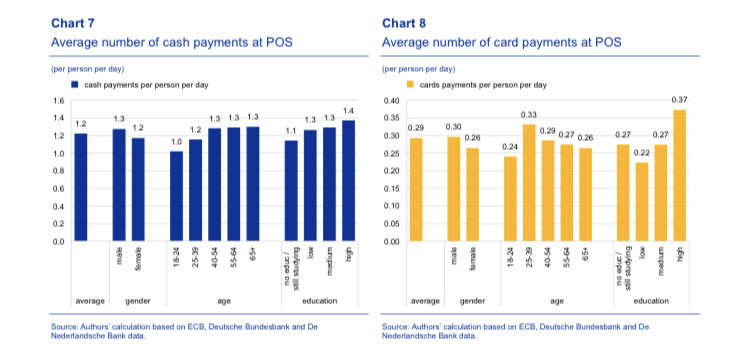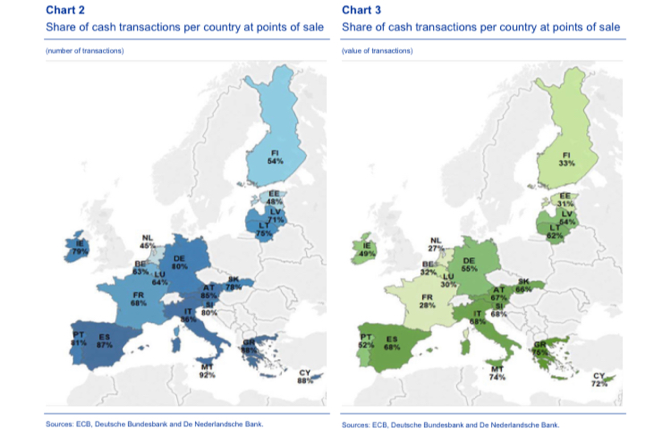Abstract
The global shift towards a cashless society represents a significant transformation in the way economies operate, driven by advancements in digital technology and the increasing preference for electronic transactions. This paper explores the implications, challenges, and future prospects of transitioning to a cashless society, by drawing on case studies from various countries at different stages of this transition. The study examines the potential benefits of a cashless society, including increased financial inclusion, reduced transaction costs, and enhanced transparency. However, we also address critical challenges, such as digital security risks, the advancements of the technological industry, and the persistence of cash in certain cultures and economies. Through a comprehensive analysis of these factors, the paper provides insights into the socioeconomic impacts of a cashless transition and offers a clear understanding of what lies ahead for the many countries embarking on this evolutionary change. While doing this, we will also highlight that although the move towards a digital economy holds significant promise, it requires careful planning, robust infrastructure, and adaptive strategies to eliminate risks and ensure that this journey is smooth and successful.
1. Introduction
As we progress through the 21st century, it is clear to see that through globalisation there has been, and is continuing to be, an overall movement of countries towards an incline in digital payments and decrease in physical cash. This shift is primarily driven by the development of technology and the extensive and broad usage of smart phones. The growing availability of secure proficient digital payment platforms has majorly accelerated this change even further. Enthusiasts that advocate for a cashless society argue that it provides countless benefits, including amplified convenience and speed, enhanced security, minimised expenses for businesses, and improved financial inclusion. Despite that, the rapid transformation generates critical challenges to be overcome before it can be fully recognised as an asset to all society groups. Common concerns that are frequently highlighted are cybersecurity vulnerabilities, confidentiality threats, and the potential exclusion of populations who lack access to digital technologies. As numerous societies globally begin to move closer to a cashless society, it is imperative to fully comprehend and deliberate the risks and broader implications of this transformation. This research paper delves into these dimensions aiming to give an extensive analysis of what it means to convert to a cashless society and the key factors that will impact its future.
2. Literature Review
The evolution of payment systems has been a critical aspect of economic development throughout history, reflecting changes in technology, societal needs, and economic infrastructures. The progression from bartering to digital payments summarises the significant milestones that have formed the processes by which value is exchanged in modern society.
2.1 Bartering and Early Payment Systems
The first global payment system was based on bartering. This refers to the exchange of goods or services for other goods or services without the use of money. For barter to occur, a “double coincidence of wants” was needed. This means that both parties had to simultaneously possess an item that the other party wanted. However, as time progressed, more generic systems were invented, such as commodity money made of cereals, shells and cattle, and eventually metal currency, which are more universally accepted and easier to store.
2.2 The Advent of Electronic Payments
Electronic payment systems appeared in the 20th century with the arrival of credit cards in the 1950s (facilitating purchases over time) and Automated Teller Machines (ATMs) in the 1960s (facilitating access to cash on site). This was followed by the development of the Internet in the 1980s, which accelerated the creation of online banking and e-commerce, giving the rise to digital payments.

2.3 Digital and Mobile Payments
Digital payments continue to be developed in the 21st century through the development of mobile payments. For example, it is now possible to make payments via smartphone and other digital devices utilising Near Field Communications Technology (NFC). This has led to payment terminals going cashless and becoming entirely contactless, thus saving business processing fees (Khan & Saleem, 2019; Luo et al, 2019). Similarly, the COVID-19 pandemic has pushed the use of contactless payments and QR code transactions, which are another noteworthy trend. Businesses are adopting contactless payment terminals as a result of consumers’ growing preference for contactless payment options, due to hygiene concerns, and the same goes for QR code-based payment systems. This trend is evident in both developed and developing economies, where it has contributed to a decline in cash usage (Mastercard, 2021).
2.4 Mobile Payments and Digital Wallets
Advances in mobile technology and the increasing prevalence of smartphones have led to an increase in the popularity of digital wallets, like Samsung, Apple Pay, and Go Wallet. These allow users to use the mobile devices to conduct purchases. Three major factors which have made these systems popular with both customers and retailers include: the ability to safely store credit card information, convenience and speed of transactions, and security (Dahlberg et al., 2015). Mobile payment systems have even grown in developing countries, enabling unbanked individuals to access financial services (Jack & Suri, 2011).
2.5 Cryptocurrencies
Cryptocurrencies are, without a doubt, a groundbreaking advancement in payment methods. Bitcoin was the pioneer digital currency, as it was the first to gain notable attention. It first came into existence in 2008, having been introduced by an unknown individual or group under the name Satoshi Nakamoto. Bitcoin operates on blockchain technology, which is essentially a decentralised ledger that eliminates the necessity for a central governing body and provides both security and transparency. Some perks of using cryptocurrencies include lower transaction fees, faster international payments, and immunity to inflationary trends (Narayanan et al., 2016). However, they also face challenges like extreme price fluctuations, unclear regulatory landscapes, and concerns regarding illegal activities (Foley et al., 2019). These hurdles often make it difficult for people to fully embrace cryptocurrencies as everyday tools.
2.6 Case Studies
2.6.1 Sweden
Sweden is often cited as the world’s most cashless society. Cash transactions have drastically decreased in the nation; in 2020, less than 1% of all payments were made in cash (Riksbank, 2021). Widespread confidence in online banking, laws supporting electronic payments, and the ubiquity of mobile payment apps like Swish are the main forces behind this movement. Due to Sweden’s strong regulatory frameworks that guarantee financial stability and consumer protection, as well as its high levels of digital literacy and financial infrastructure, the transition has gone smoothly (Arvidsson, 2019).
2.6.2 China
Due in large part to the widespread use of mobile payment platforms like WeChat Pay and Alipay, China has seen a rapid shift towards digital payments. Through the integration of numerous services, such as payments, e-commerce, social networking, and financial management, these platforms have completely transformed everyday transactions. Through initiatives that support innovation and discourage the use of cash, the Chinese government has also been significantly improving digital payments (Huang et al., 2018). However, because a limited fraction of large technology companies hold the majority of the payment market, this adjustment has sparked concerns regarding market monopolisation and data privacy (Zhu & Xie, 2019).
2.6.3 India
India’s shift towards a society with minimal cash has been significantly impacted by the government’s decision in 2016 to demonetise high value currency notes, which removed approximately 86% of the country’s cash from circulation (Al Jazeera, 2023). This move was intended to tackle corruption and encourage digital payments. The move resulted in large denominations of currency being rendered useless overnight. As a result, there was an inevitable rise in the use of digital wallets, UPI (Unified Payments Interface), and mobile banking solutions (Chaudhuri, 2018). Similarly to this policy change, the introduction of the Goods and Services Tax (GST) added more reasons for people to opt for digital transactions, by bringing more formalisation into the economy. Nevertheless, even though digital payments have grown at an impressive rate, some issues are still present. These include difficulties with digital literacy among certain populations, cyber security threats that could be concerning for users (particularly for those new to online platforms), and the need for developing necessary infrastructures in rural areas to prevent financial exclusion (Shukla & Gupta, 2020).

3. Benefits of a Cashless Society
3.1 Increased Financial Inclusion
One of the primary advantages of a cashless society is its ability to promote broader financial access. Traditional banks often exclude an extensive proportion of the population, particularly those in more rural places and underserved communities. However, with the rise of mobile banking, digital wallets, and online payment methods, individuals who don’t have traditional bank accounts can join the formal economy. For example, research indicates that mobile payment options have greatly increased access to financial services in developing areas, especially in Sub-Saharan Africa and in some parts of Southeast Asia (Demirgüç-Kunt et al., 2018).
3.2 Crime Reduction
Many developed countries back plans to move towards a cashless economy on the grounds of curbing crime, another profound strength of a digital economy. Cash is hard to trace, and therefore fosters illicit activities, such as tax evasion and money laundering, that many criminals have been executing for years (Schneider, 2017). In contrast to cash, electronic transactions are traceable and can provide law enforcement agencies with a significant amount of information on illegal financial activities. Countries such as Sweden, who have moved their payment systems from lines of cash to almost 100% converted into digital currency, have experienced a significant decrease in theft and robbery crimes (Arvidsson et al., 2019).
3.3 Improved Tax Compliance
The traceability of digital payments also assists in enforcing tax compliance. Due to the secrecy surrounding cash transactions, particularly in informal sectors, they are often unreported, and major tax losses to governments take place. In a digital transaction, the use of money is automatically recorded, and it also enables for easier tracking between the types. This not only records higher tax but also leaves fewer avenues of avoiding taxes (Rogoff, 2016). With this increase in income, governments will have more revenue, which they can utilise to invest in public services and infrastructure that benefit the community.
3.4 Environmental Sustainability
A cashless society would also deliver environmental benefits, since the necessity for physical money production has been removed. The processes of printing currency, minting coins, and transporting and storing cash has diverse environmental effects. This environmental footprint can be reduced by the transition to digital transactions, as the processing of electronic payments is not paper-based and reverses logistics related issues (OECD, 2020).
4. Challenges and Risks
4.1 Privacy Concerns
The biggest concern surrounding the idea of a cashless society is privacy concerns, with many consumers being left uneasy about their data being harvested or tracked by big corporations (Morgan, 2024). Digital transactions generate vast amounts of personal financial data, making it simple for companies, governments, and third parties to track and analyse individuals’ spending habits. So, in order to combat this, implementation of strict cyber security protocols and regularly updated formulated data protection laws must be in place. Regulatory frameworks such as the General Data Protection Regulation (GDPR) should provide a base for protecting customer rights to privacy. Meanwhile, digital currencies based on blockchain technology should continue to be introduced, to aid the preservation of privacy in financial transactions, without sacrificing the benefits of cashless payment systems and powerful encrypted decentralised payment solutions.
4.2 Cybersecurity Threats
The increased use of digital payment systems exposes consumers to more cybersecurity risks, including fraud, identity theft, and hacking. Cybercriminals perceive financial organisations and business enterprises that process cashless transactions as vulnerable and easy targets, which leaves the integrity of financial systems at serious risk. Due to this, in 2023 alone there were 2,365 cyberattacks, with 343,338,964 victims, and 2023 also saw a 72% increase in data breaches since 2021, which held the previous record (Mariah, 2024). This has only increased since then.
Governments and financial institutions need to invest in the latest cutting-edge security technologies, like blockchain, multi-factor authentication, and encryption, in order to reduce cybersecurity attacks. Public awareness campaigns, employee training, and routine security audits can all help to increase the durability of digital payment systems. To develop a coordinated response to cyberthreats, cooperation between national and international cybersecurity authorities is also necessary to prevent them.
4.3 System Failures and Dependency
A cashless society leaves us particularly vulnerable to technology failure, whether through technical problems, power outages, or cyber-attacks. These halts in economic activity can be crippling, more so for those who are exclusively dependent on digital payments to perform daily transactions. To manage technology risks, governments and enterprises need to invest in a strong digital backbone. They must build redundant systems, install backup power supplies, and develop offline payment options in times where there are unexpected disruptions to ensure the continuation of all operations. These organisations must also subsidise a safety net during catastrophes, should the worst-case scenario ever happen.
In summary, the transition to a cashless society presents several challenges and risks, including financial exclusion, privacy concerns, cybersecurity threats, and the potential for increased government surveillance. However, with the right strategies and solutions in place, such as enhancing digital literacy, strengthening data protection, investing in cybersecurity, and creating resilient digital infrastructures, these challenges can be effectively mitigated. When carefully managed, a cashless society can deliver numerous economic and social benefits, creating a more efficient, transparent, and secure financial system for all.
5. Technological Infrastructure
Technological infrastructure is also a significant topic for a cashless society. The digital payment network has advanced in the current generation, and has steadily become a main payment method in modern society. The payment methods include the use of digital wallets (e.g., Apple Wallet) and mobile payment apps, such as Alipay.
In China, a primarily cashless country, the government has encouraged residents to use digital RMB (electronic form of Chinese currency). In the year 2023, there were nearly 30,000,000,000 digital transactions processed by the banks in China [1]. Back in 2018, 82.39% of adults in China were using digital payments, which is a high percentage [2]. The high percentage of people using electronic money frequently has been significantly facilitated by the high prevalence of online delivery services, as they are extremely convenient.
There are delivery apps, like Meituan, which need to be connected to a digital payment network to function, and allow customers to order food in a single streamed service. The backbone of the digital payment network lies in the advanced financial technology infrastructure that has been rapidly developed. At the core of this are the secure digital wallets and mobile payment apps that seamlessly integrate with consumers’ bank accounts and credit or debit cards. These digital wallets utilise biometric authentication, such as fingerprint or facial recognition, to ensure the security of transactions. They are also underpinned by robust encryption protocols and real-time data processing capabilities to enable instantaneous fund transfers between payers and payees. Furthermore, the integration of digital payments with other digital services has been a major driver of adoption. By embedding payments into the user experience of these ubiquitous applications, the shift away from physical cash has been normalised.
Overall, the technological infrastructure powering digital payments has evolved rapidly, with increased security, speed, and seamless integration into consumers’ daily lives. This has been a critical enabler of the cashless society we are witnessing emerge, particularly in technologically advanced economies like China’s.
6. Economic and Social implications
The implementation of a cashless society also has significant economic and social implications that are important to consider. On the economic front, the decrease of using physical currency can lead to substantial cost savings for financial institutions and central banks. Moreover, the data generated by digital transactions can provide insights into economic trends.
The data which was discussed in the previous section shows that the majority of citizens in China are using digital payments. Furthermore, the percentage of citizens using digital payments is still rapidly increasing. From the year 2022 to 2023, the number of transactions and amount of digital payment in China have increased by 6.17% and 9.17%, respectively [3]. At the same time, the use of digital currency is also being normalised in European countries, such as Sweden. In Sweden, the total digital transaction value is projected to reach US$ 60.22bn in 2024, which is a significant amount [4]. This data can empower those businesses and policymakers to make more data-driven decisions when considering the implementation of digital payments.
There are also potential larger economic consequences to consider. A reduction in the use of physical money can affect the transmission mechanisms of the financial system, requiring central banks to change their tools and strategies. Furthermore, a reduction in anonymous transactions has changed the dynamics of cryptocurrency or informal financial activity.
The social implications are more complex. The increased transparency and traceability of financial activities can enhance financial inclusion. It may also help in combatting financial crimes like tax evasion. Yet, this same transparency raises valid privacy concerns, as governments and corporations gain greater visibility and control over individuals’ financial lives.
Overall, the technological development underpinning a cashless society presents economic opportunities and social challenges that need to be carefully managed. Policymakers, regulators, and industry stakeholders must work together to leverage the benefits, while also managing potential risks and unintended consequences. Striking a balance will be critical to ensuring a healthy and sustainable transition to a truly cashless future.
7. Outlook
The transition to blockchain technology, artificial intelligence, and the rise of digital currencies brings about enormous changes in the financial sector. These technologies can totally alter the way we use and understand money today. The progress of technology will cause important and irreversible changes in the economy and society.
Alongside the development of technology, countries are trying to implement digital currencies as one of the alternatives to cash. This type of money is centralised and exclusively managed by central banks. This is in contrast to cryptocurrencies, such as Bitcoin, which are not connected to any central authority. The widespread use of Central Bank Digital Currencies (CBDCs) could cause a major shift in the way we both perceive and use money. On the one hand, this generates benefits like money laundering and tax evasion prevention. On the other hand, it also leads to privacy intrusion.
One such case is China, which has put into place the digital yuan. It has already been tested and integrated into their financial system. This might imply that, in the future, digital currencies might not only exist alongside traditional money, but even replace them. One very important question is: what will be the consequences for commercial banks if individuals and companies are allowed to hold accounts directly with central banks? There would be no more need for mediators like commercial banks. This transition can significantly change the whole role of commercial banks and so they will need to evolve and provide another set of services.
On the contrary, cryptocurrencies (such as Bitcoin, Ethereum, etc.) are now playing a big part in the financial industry, with blockchain technology being massively used in different parts of the world. Transparency and security are two major features of a blockchain-powered system that could be a game-changer not only in finance but also in traditional services, such as healthcare and voting systems.
The popularity of cryptocurrencies and their adoption grows as regulatory frameworks develop to support them. Cryptocurrencies are being used more frequently, as their adoption is being worked on, which includes the development of appropriate regulations. The expanded use of cryptocurrencies due to the understanding of their potential can lead to better acceptance. However, there is an issue at the same time; this category of resources is far more prone to volatility than other financial instruments, which is the main reason why their acceptance is limited.
Yet, the potential of blockchain technology is great enough to alter the whole business world. Blockchains are an open ledger technology that allow for the data records to be secure, distributed across networks, and transparent. It brings ideas of inventions and thorough improvement in the systems that are in use currently. It can free people from traditional banks and bring them to the new era of financial technology.
As the evolution of digital payment methods continues, biometrics are projected to play a greater role as they can now be used to intensify security and add to the ease of payment services. Innovations such as biometric solutions based on technologies such as facial recognition, fingerprint scanning, and voice recognition are making their ways into payment apps to improve transaction experience. These advancements might even lessen the possibility of fraud and identity theft, which are key concerns in an increasingly cashless society.
Furthermore, biometric-based AI technologies, as the backbone of the personalised aspect of financial services, are about to be a force for greater importance by eliminating the cumbersome process of transactions and ensuring better user experience. Artificial intelligence has been a game-changer in the industry, especially when we consider its ability to do amazing things like recommending action plans and paying bills on time. Thus, the biometric-based AI technologies would ideally function as a source of data security as well as improve user experience.
The integration of AI and biometric technologies in the payment processes will bring about a more efficient, streamlined, and, in general, worry-free environment for the end-users. However, it also brings to light the issues of privacy and data security. These systems are currently collecting demographic and sensitive personal information for analysis. In this case, it is necessary to withdraw access to the information from those who want to exploit the ones who are sharing their data.
8. Conclusion
The technological breakthroughs in blockchain and the AI-powered transaction system are paving the way for a future where the traditional financial sector may be changed forever. The financial suite of services will not only be administrative, but also touch every aspect of our life. Over the next few years, digital payments revenue is expected to grow, while cash usage is in decline.
Dreams of a digital and cashless society are abundant. The transformation of digital, AI, and blockchain-based economies will bring about a fundamental change in financial and other services, the nature of work, and the structure of new relations among the state, companies, and citizens. Transformations in the ways that people are employed are followed by a decrease in cash usage. The recent technological innovations in the space of digital payments are making it easier for mobile payments to be prone to fraud cases, and that is exactly where mobile security comes into the picture.
Footnotes
Bibliography
Al Jazeera & News Agencies (2023): India’s Supreme Court says 2016 demonetisation decision was legal. News Article Retrieved from https://www.aljazeera.com
Arvidsson, N. (2019). Building a cashless society: The Swedish route to the future of cash payments. Palgrave Macmillan.
Arvidsson, N. (2019). The cashless society: A transaction cost perspective. Palgrave Macmillan.
Arvidsson, N. (2019). The cashless society: Consumer payment methods and the implications for cash usage. Journal of Payments Strategy & Systems.
Chaudhuri, S. (2018). The impact of demonetization on digital payments in India. Economic and Political Weekly.
Choi, J., & Lee, J. (2020). The impact of a cashless society on financial inclusion: Evidence from developing countries. Journal of Financial Innovation, 3(4), 234-248.
Dahlberg, T., Guo, J., & Ondrus, J. (2015). A critical review of mobile payment research. Electronic Commerce Research and Applications.
Demirgüç-Kunt, A., Klapper, L., Singer, D., Ansar, S., & Hess, J. (2018). The Global Findex Database 2017: Measuring financial inclusion and the fintech revolution. World Bank Group.
European Central Bank. (2019). The use of cash by households in the euro area. ECB Economic Bulletin.
European Central Bank. (2021). Digital euro: Opportunities and risks. ECB Occasional Paper Series No. 286.
Evans, D. S., & Schmalensee, R. (2005). Paying with plastic: The digital revolution in buying and borrowing. MIT Press.
Foley, S., Karlsen, J. R., & Putniņš, T. J. (2019). Sex, drugs, and bitcoin: How much illegal activity is financed through cryptocurrencies? The Review of Financial Studies.
Gomber, P., Koch, J. A., & Siering, M. (2017). Digital finance and FinTech: Current research and future research directions. Journal of Business Economics, 87(5), 537-580.
Gozman, D., Willcocks, L., & Li, Y. (2021). The impact of FinTech on cashless society: Risk management and regulatory challenges.” Journal of Financial Regulation, 7(1), 98-115.
Hameleers, M., & Brosius, A. (2022). Privacy concerns in a cashless society: Public perceptions and legal challenges. Journal of Privacy and Information Law, 5(2), 150-172.
Huang, Y., Wang, L., & Xie, T. (2018). E-commerce development and urban logistics system transformation in China. Journal of Cleaner Production.
Jack, W., & Suri, T. (2011). Mobile money: The economics of M-PESA. NBER Working Paper.
Kindleberger, C. P. (1984). A financial history of western Europe. Allen & Unwin.
Mariah, S.J., & Swanston, B. (2024): Cybersecurity stats: Facts And figures you should know.” Retrieved from https://www.forbes.com/advisor/education/it-and-tech/cybersecurity-statistics/.
Mau, S. (2019). Automating inequality: How high-tech tools profile, police, and punish the poor. St. Martin’s Press.
Mastercard. (2021). Mastercard new payments index: Consumers embrace digital payments. Retrieved from https://www.mastercard.com;
Morgan, K. (2024). A cashless society: what are the pros and cons? Retrieved from https://www.unbiased.co.uk/.
Nakamoto, S. (2008). Bitcoin: A peer-to-peer electronic cash system. Retrieved from https://bitcoin.org/bitcoin.pdf.
Narayanan, A., Bonneau, J., Felten, E., Miller, A., & Goldfeder, S. (2016). Bitcoin and cryptocurrency technologies. Princeton University Press.
OECD. (2020). Going digital: Shaping policies, improving lives. OECD Publishing.
Riksbank. (2021). Payments in Sweden 2020. Retrieved from https://www.riksbank.se.
Rogoff, K. (2016). The curse of cash. Princeton University Press.
Shukla, T., & Gupta, P. (2020). Digital payments and financial inclusion in India: Trends, challenges, and policy imperatives. Journal of Public Affairs.
Smith, A. (1776). An inquiry into the nature and causes of the wealth of nations.Sceider, F. (2017). Shadow economies around thewWorld: What did we learn over the last 20 years? IMF Working Papers.
Suri, T., & Jack, W. (2016). The long-run poverty and gender impacts of mobile money. Science, 354(6317), 1288-1292.
Turban, E., King, D., Lee, J. K., Liang, T. P., & Turban, D. C. (2017). Electronic commerce: A managerial and social networks perspective. Springer.
Von Glahn, R. (1996). Fountain of fortune: Money and monetary policy in China, 1000–1700. University of California Press.
World Bank. (2022). Financial inclusion global Findex database 2021: Measuring financial inclusion and the Fintech revolution.
Zuboff, S. (2019). The age of surveillance capitalism: The fight for a human future at the new frontier of power. PublicAffairs.




